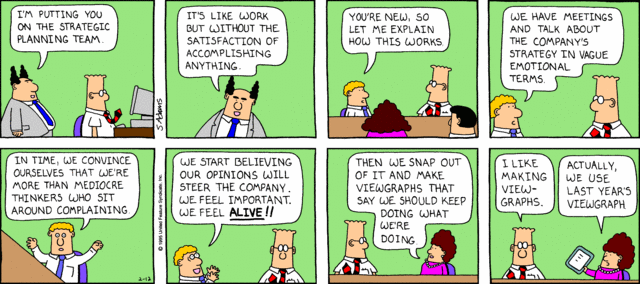Employee Engagement
As I continue to catch up on the A-Z's, E is for Employee Engagement. I previously mentioned Gallup's work in this field. Last October at the Midwest Academy of Management conference in Omaha I had the opportunity to listen to and then speak briefly with Dr. James. K. Harter, co-author of 12: The Elements of Great Managing. His work with Gallup on the Well-Being index should be an eye opener for both employers and employees in America.
During his talk at the conference, Dr. Harter pointed out that in the U.S. in particular where the Well-Being data is gathered daily, there's a pattern of decreasing wellness Monday through Friday and an in increase on Saturday and Sunday. What you may ask, does Well-Being have to do with Employee Engagement? The fact is that the majority of American workers are not engaged in their jobs. Research shows an even higher percentage of Americans would leave their current employer if they could or when the economy recovers. It shouldn't take a doctorate to see a direct correlation between being engaged in what we do for a living and well-being.
In almost all of my classes to help students understand the difference between employers who really engage their workers and those who make executive decisions with MBA's in corner offices I talk about HCL. Last May I was fortunate enough to hear HCL vice-president Anand Pillai speak at the Organization Design Forum in Austin, Texas. In 2008 when the global economy collapsed, HCL needed to save $100 million in their budget or face layoffs. In the U.S. in order to accomplish that we regularly see Fortune 500 companies simply cut 10,000 jobs, which has debilitating effects on the remaining employees, let alone on the families and communities of those who were downsized. HCL CEO Vineet Nayar engaged their employees in all 27 countries, who in turn saved the company $200 million and no jobs were lost. Nayar's book Employees First Customers Second about where the real value creation for any organization lies should be required reading at all levels of higher education.
 Solving whatever strategic issues that face our organizations today requires the engagement of team members at every level of the organization. Not every member, but every level. After all, who knows more about cutting costs in a given department; the MBA in a corner office who's never done that specific task, or the people who perform that function day in and day out? As Pillai writes, you can't build a positive brand out of negative employees.
Solving whatever strategic issues that face our organizations today requires the engagement of team members at every level of the organization. Not every member, but every level. After all, who knows more about cutting costs in a given department; the MBA in a corner office who's never done that specific task, or the people who perform that function day in and day out? As Pillai writes, you can't build a positive brand out of negative employees.This makes me want to pull out the Barry Levinson movie "Toys" with Robin Williams again. A great example of clashing organizational cultures and change. And as always when there's a moment of clarity regarding an important issue, I see Sean Connery in my mind from The Untouchables saying to Kevin Costner "What are you prepared to do about it?"
But then, I've always been a little different. You'll find Anand Pillai talking about HCL's philosophy below. It's created thousands of jobs and billions in revenue.




Comments
Post a Comment
Thank you for sharing your worldview.